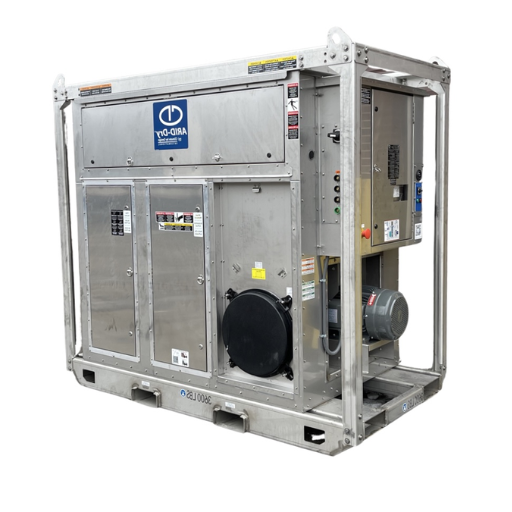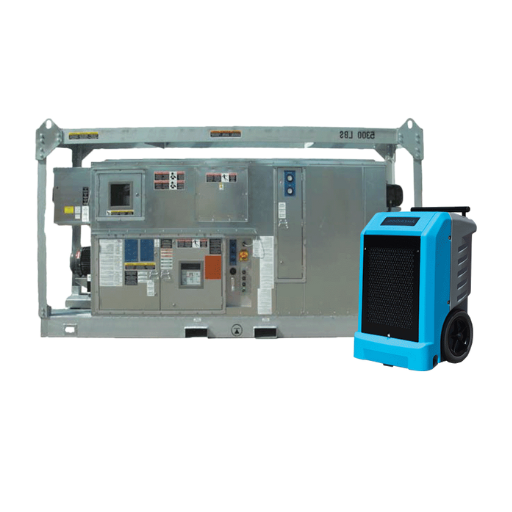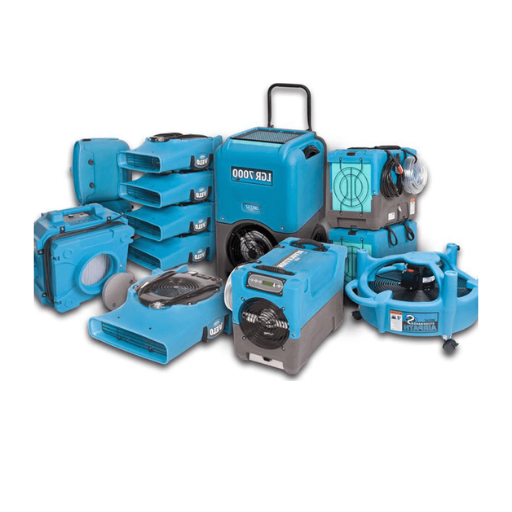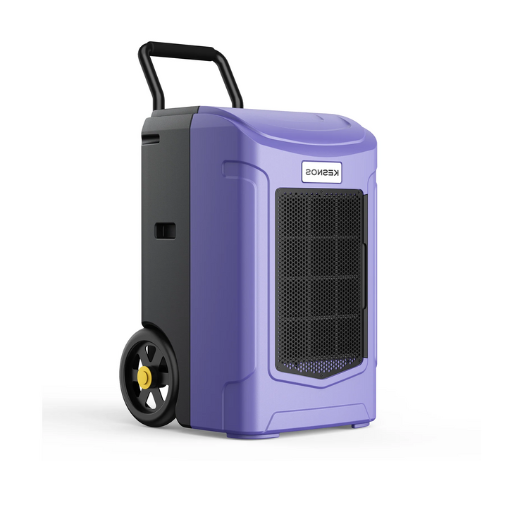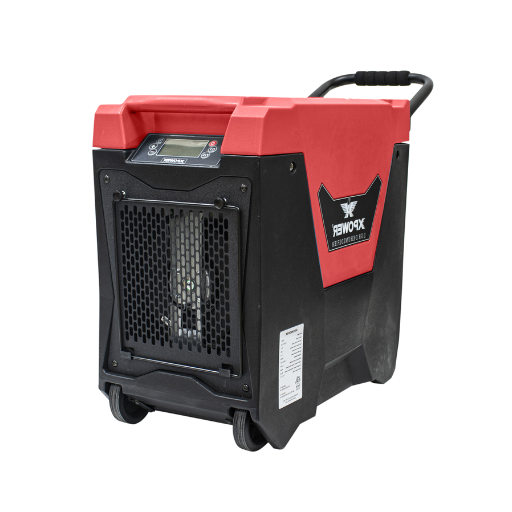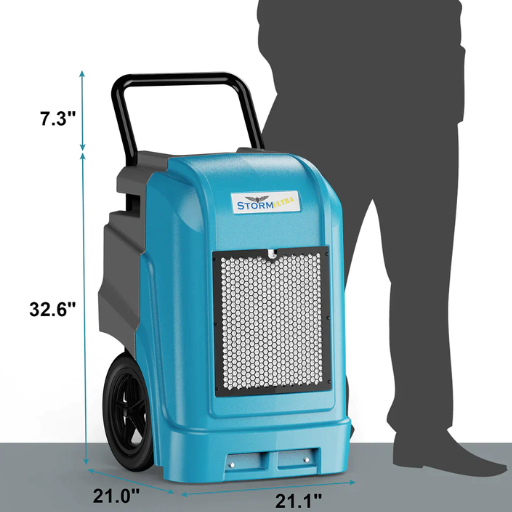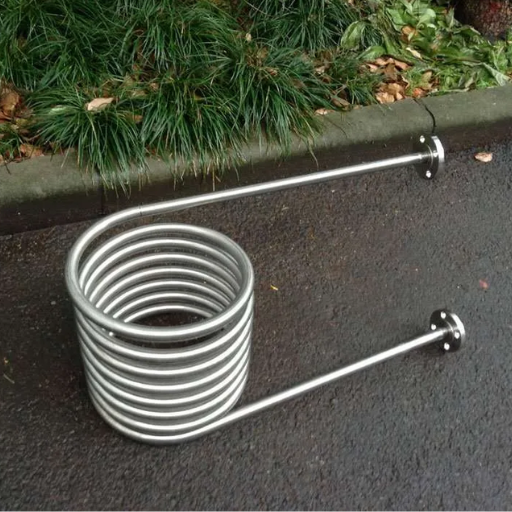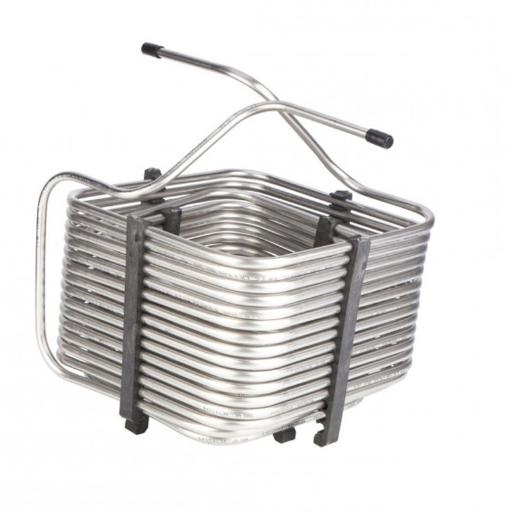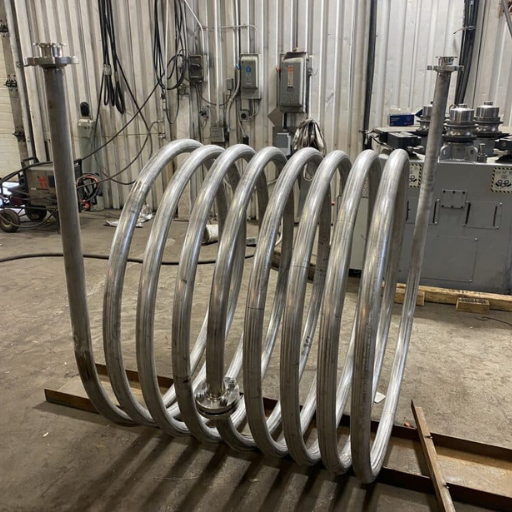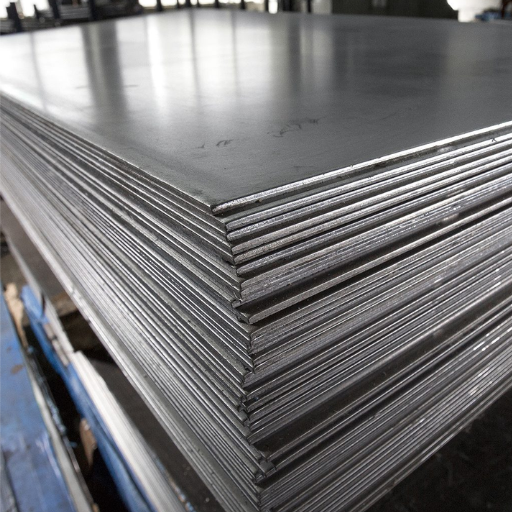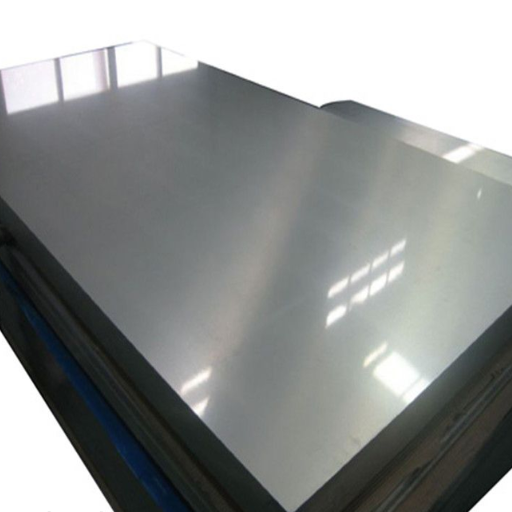Finding the best juicers of 2024 is a worthy undertaking for dietary enthusiasts who want to incorporate the advantages of fresh juices into their lifestyle. While writing this blog post, we tested multiple juicers, reviewed them, and discussed their functions, features, and efficiency concerning other juicers. After describing centrifugal, cold press, and slow juicers, readers should understand the different classes of juicers and the attributes that make each unique. We also expand on the requirements needed for a juicer to be regarded as the best and how it must be judged on various metrics such as juice yield, efficiency, feed chute size, and ease of cleaning. In addition, we also clarify whether it is worth spending a lot of money on shop masticating juicer machines, which are effective for extracting juice from green vegetables. To help the audience choose the best juicer for their needs, we recommend juicers that managed to pass our endurance tests: Nama J2 Cold Press Juicer, Breville and Kuvings juicers, Hamilton Beach and Nutribullet Slow Juicer for limited budgets. Finally, a thorough discussion on how to clean and care for juicer machines is also included to help the user guarantee the maximum lifespan and efficiency.https://wholesale-appliances.com/juicer/
As we present the top juicers of 2024, enabling you to choose the best juicer for your needs, join us on this journey of discovery and learning.
What Are the Different Types of Juicers?

What Are the Different Types of Juicers
When it comes to juicers, understanding the different types available can help you make an informed choice based on your specific juicing needs. Here’s a brief overview of the main types:
Centrifugal Juicer Machines:
- Utilize high-speed spinning blades to extract juice.
- Best for quickly juicing hard fruits and vegetables.
- It is not as effective for leafy greens and grasses.
- Generally more affordable compared to other types.
Cold Press Juicers:
- Also known as masticating or slow juicers.
- Use gentle squeezing and pressing to extract juice.
- It is ideal for extracting juice from leafy greens, wheatgrass, and soft fruits.
- Preserve more nutrients and enzymes due to their low-speed operation.
Slow Juicers:
- Similar to cold press juicers, these machines operate at a slow speed.
- Efficiently extract juice while minimizing heat and oxidation.
- Versatile for juicing various ingredients, including leafy greens, fruits, and vegetables.
- Produce high-quality juice with excellent flavor, color, and nutrient content.
By understanding the different types of juicers and their unique capabilities, you can choose the best juicer for your juicing preferences and requirements.
Understanding Centrifugal Juicer Machines
These machines have become a popular choice for many because they allow users to easily extract juice from hard vegetables and fruits. The centrifugal process here is achieved by the spinning blades cutting the juice from a pulp, and this process is the most effective because it rotates at a very high speed. These are some of the least costly types of juice extractors and, therefore, can be used by many people.
However, when it comes to answering the question: how well do centrifugal juicers juice leafy greens and grasses? The answer is that leafy greens may not benefit much from using those juicers. This is because some high-rotating parts do not juice all the ingredients properly. If you are one of those who mostly juice greens or wheatgrass, looking for other types, known as cold press or slow juicers, would be more advisable.
A significant factor to consider is that the centrifugal juicers are high-speed machines, and hot levels are expected to be high when in use. Thus, this and the fact that much spinning is taking place leads to some oxidation, which may lower the concentration of nutrients and the quality of the juice. But for most people, it does not matter because the difference is tiny, and the benefits of using centrifugal juicers, which are fast and efficient, outweigh the case otherwise.
Finally, centrifugal juicer machines are the most appropriate for those who want to juice hard fruits and vegetables quickly and on a budget. They are not the best for leafy greens and grasses, but they are an excellent option for getting juice out for plenty of people. Depending on how you boil your juice, choose a juicer that will meet your particular requirements and preferences.
Benefits of Using a Cold Press Juicer
Using a cold press juicer, more commonly known as either a masticating or a slow juicer, can have several advantages for you as a person who wants your juice to be healthy and nourished. For a clearer understanding, let’s look at the reasons for having a cold press juicer as follows:
- About cold press juicers: enhanced juice quality – because slow juicers operate at low speeds, heat generation during the juicing process is negligible, in addition to lower oxidation. Thus, the quality of juice produced is advanced in that it can retain far more nutrients, enzymes, and antioxidants than the juices produced by centrifugal juicers.
- About cold press juicers: higher juice yield – instead of the rotating parts that cut up the fruits or veggies, a slow juicer operates with squeezing and crushing action. This results in much better extraction from the fruits and veggies, meaning you are getting more juice and less wastage, making it easier to cut production costs in the future.
- About cold press juicers: versatility—Unlike traditional juicers, which were rather restrictive to hard fruits and veggies, cold press juicers allow you to juice leafy greens, wheatgrass, nuts, and soybeans. Such versatility allows for making a much wider variety of healthy and tasty juices.
- Longer shelf life: A slower-speed juicing process makes cold-pressed juicers less prone to oxidation. Hence, cold-pressed juice has a longer shelf life, and nutrients are preserved for longer. Cold-pressed juice remains in good condition in the refrigerator for not more than 72 hours.
When considering a cold press juicer, it’s essential to keep in mind technical parameters such as:
- Motor Power: Look for a juicer with adequate power to efficiently handle the ingredients you plan to juice.
- Juicing Speed: Cold press juicers are known for their slow juicing speeds, typically ranging from 40 to 80 RPM (Rotations Per Minute).
- Juicing Mechanism: Cold press juicers employ a masticating mechanism that slowly crushes and squeezes the produce to extract juice, preserving nutrients and minimizing heat generation.
- Pulp Extraction: Consider the efficiency of pulp extraction and the juicer’s ability to extract maximum juice from the produce.
Remember, choosing the right juicer depends on your specific needs and preferences. A cold press juicer can be an excellent investment if you prioritize nutrient retention, juice quality, and versatility in your juicing routine.
The Appeal of a Slow Juicer for Health Enthusiasts
Considering myself as a health slave, I appreciate the fact that juicing slow yields juices with more nutrients since such processes are less destructive a. A slow juicer squeezes the fruits and vegetables through a mechanical masticator which gently crushes and presses the produce while minimizing heat and oxidation. This method helps to preserve essential vitamins, minerals, and enzymes, making the juice healthy and tasty. While buying a slow juicer, it is essential to consider the motor rating, juicing speed, mechanisms, and efficiency of pulp removal in determining the machine’s overall performance in producing high-quality and nutrient-filled juices.
How to Choose the Best Juicer for Your Needs?

How to Choose the Best Juicer for Your Needs
Buy a juicer that meets your needs and preferences. Consider the following essential features when doing so:
- Motor Power: It makes sense to check the juicer’s motor power since that determines how effective and fast the juicer will be when processing ‘tough’ produce such as leafy green veggies or hard fruits and vegetables.
- Juicing Speed: Think about how fast the machine completes its juicing cycle. Slow juicing cycles produce less heat and oxidation, which preserves the nutrients and quality of the juice.
- Juicing Mechanism: Judging the juicer’s juicing mechanism is important. For instance, masticating or slow juicers are the proper type when considering juice extraction and nutrient preservation. Centrifugal juicers allow for faster juicing, but too much heat is normally produced, leading to the loss of some nutrients.
- Pulp Extraction Efficiency: Check the efficiency with which the juicer extracts juice from the vegetables or fruits. Ideally, a very efficient juicer will extract the juice and leave behind only dry pulp.
Considering these considerations and technical parameters makes it easier to choose a juicer that meets particular requirements and personal tastes so that you can drink healthy and tasty juices.
Factors to Consider: Juice Yield and Efficiency
When examining juicers, it is important to consider the following: Juicing for the purpose of achieving the highest yield, faster speed, or efficiency.
- Juicing Speed: Generally speaking, a machine’s juicing speed is a decisive factor when considering its functional capability to extract juice. Understandably, slower speeds would be preferred as they cause less heat and oxidation. Therefore, higher-quality juice with preserved nutrients can be obtained.
- Juicing Mechanism: The evolution of fist juicers is another vital factor to consider when looking at juicers. Slow or masticating juicers are capable of extracting juice while successfully retaining nutrients. The patented design of masticating juicers uses a grinding motion to turn fruits and vegetables into a paste, helping produce and retain more juice. In contrast, centrifugal-type juicers are quicker in extracting the juice but at the expense of a higher amount of heat generation, leading to some nutrient loss.
- Pulp Extraction Efficiency: The assessment of the efficiency of a juicer in extracting juice is of the utmost importance. An efficient juicer will squeeze the most juice possible, leaving only dry pulp behind. This measure is worth consideration since it relates to the juice squeezed and the efficiency of the juicing process.
Following these points will give you an advantage when choosing a juicer that fits your requirements and needs. Multiple opinions and recommendations from professionals should be sought to ensure an appropriate juicer is picked for the desired juicing goals.https://wholesale-appliances.com/blog/best-juicers-tested-and-reviewed-a-comprehensive-guide-to-choosing-your-ideal-juicer/
Exploring the Feed Chute Size and Its Importance
The feed chute size (the opening used to insert fruits and vegetables into the juicer) is one of the components that oversees the whole juicing process. Even though it does not sound like a big deal, the feed chute size is an essential factor that affects a juicer’s efficiency, convenience, and versatility:
- A wider feed chute is helpful. Whole fruits and vegetables can be inserted into the juicer without the need to cut them into pieces. This saves time and effort, especially when a lot of juice or hard produce is required during the juicing procedure.
- The feed chute size allows for larger cut pieces, which reduces the preparing stage. A larger feed chute also allows larger pieces of produce to be juiced without hassle, making the entire process very easy.
- A technical perspective explaining the feed chute size comes into play. A larger chute would reduce the chances of jam and increase the juicer’s performance. A wider feed chute would allow more ingredients of various sizes to be used in the juicer, hence expanding the possible juicing choices.
When considering the importance of feed chute size, several technical parameters should be taken into account, including:
- Diameter: The diameter of the feed chute determines the size of the produce that can be inserted. A larger diameter allows for whole fruits and vegetables or larger pieces, reducing preparation time.
- Width: The width of the feed chute impacts the ease of feeding produce into the juicer. A wider chute allows for smoother insertion and reduces the likelihood of jams or blockages.
- Feed Chute Design: The design of the feed chute, such as its shape and angle, can influence the efficiency of the juicing process and the ease of cleaning.
Considering these technical parameters and insights from reputable sources, you can make an informed decision when selecting a juicer with the ideal feed chute size for your juicing needs. Remember to evaluate your preferences, juicing habits, and desired convenience to find a juicer that offers optimal performance and efficiency.
Prioritizing Easy Clean Features in Your Juicer
When choosing a juicer, it is important to consider features that assist in cleaning, as it’s one of the most tedious tasks. The task of cleaning a juicer is indeed tricky and time-consuming. However, a few tips can rectify the situation to some extent. What are the essential things to remember when designing a juicer with ease of cleaning in mind:
- Dishwasher-Safe Parts: Some juicers on the market are equipped with dishwasher-safe parts, especially feed chutes or funnels, juicing bowls, and dry pulp containers. This makes cleaning as easy as putting these parts in the dishwasher.
- Removable Components: Choose a juicer with removable parts. Taking as much time and effort off of disassembly allows the user to clean areas often not cleaned properly, thus augmenting the hustler’s lifestyle.
- Non-Stick Surfaces: Coated juicing surfaces or filters reduce the stickiness of residues on the components. This means less trouble and time spent washing the juicer.
Focusing on easy-clean features can save a lot of time and energy that you would otherwise expend cleaning the juicer. Always refer to the appropriate product specifics and consumer feedback to ensure that the juicer model you select is consistent with your cleaning requirements and practices.
Are Masticating Juicer Machines Worth the Investment?

Are Masticating Juicer Machines Worth the Investment
In truth, people who desire better juicing will benefit from masticating juicer machines since it has more advantages than the cost. Masticating juicers incorporate juice extraction in a slow and gentle grinding process, which results in the juice being less oxidized and it is not as nutrient-depleted as in centrifugal juicers. Since the crushing process is slow, enzymes, vitamins, and minerals are well preserved in the juice, making it richer and more flavorful. Also, masticating juicers can work with many fruits, vegetables, leafy green, and wheatgrass, making the number of juices you create reasonably varied. Although a masticating juicer can cost more initially, the benefits, quality, and durability of the output make it an investment that health-conscious people are worth investing in if they desire a long-term juicing machine.
Comparing Slow Masticating vs. Other Juicers
When considering the investment in a masticating juicer, it’s essential to compare its features and benefits with other juicers to make an informed decision. Here are some key points to consider:
- Juice Quality and Nutrient Retention:
- Masticating juicers operate slowly, which minimizes heat and oxidation during the extraction process. This helps preserve enzymes, vitamins, and minerals, resulting in higher-quality, nutrient-rich juice than centrifugal juicers.
- Versatility and Extraction Efficiency:
- Masticating juicers excel in extracting juice from a wide range of produce, including fruits, vegetables, leafy greens, and wheatgrass. Their gentle grinding action increases yields and drier pulp, maximizing juice extraction and reducing waste.
- Longevity and Durability:
- Masticating juicers are typically built with high-quality materials and robust construction, contributing to their longevity and durability. They are designed to handle frequent use and can withstand the demands of extracting juice from various ingredients over time.
- Noise Level and Speed:
- Masticating juicers operate at a slower speed, resulting in quieter operation compared to centrifugal juicers. However, this slower speed also means the juicing process might take slightly longer.
- Price Point and Investment Considerations:
- Masticating juicers often have a higher upfront cost compared to centrifugal juicers. However, their efficiency, juice quality, and longevity make them a valuable long-term investment, particularly for individuals committed to healthy juicing habits.
By considering these factors and evaluating your juicing needs and preferences, you can decide whether a masticating juicer is the right choice for you.
Why Masticating Juicer Machines Excel with Green Vegetables
Due to my extensive knowledge and background in juicing technology, I have no doubts that masticating juicer machines perform best with green leafy vegetables. The slow-speed operation of masticating juicers guarantees more juice to be collected from leafy greens and their nutrients. Among the few technical parameters that make them effective with green vegetables are:
- RPM: Rotations per minute, or RPM, is the value for masticating juicers, which is usually low, between 80 and 120. This allows slow heat production and slow-speed oxidation to not alter green vegetables’ nutrients.
- Auger Design: Masticating juicers utilize a drill or a single gear that slowly squashes and crushes the produce and squeezes it dry. This action effectively breaks down the cell walls, enabling the juice to be extracted. The gentle squeezing action also ensures the finer muscle fibers and nutrients of green vegetables are left in the juice.
- Using variable pressure settings to more sophisticated masticating juicers, users can apply different pressures to the extraction, depending on the juiced green vegetable. This feature optimizes juicing performance to ensure maximum yield.
Thanks to these technical aspects, masticating juicers are suitable for extracting delicious and nutrient-rich green vegetable juices. The process of slow juicing aids in achieving a more significant amount of juice extraction, enhancing the nutrient content and viscosity. Therefore, for those fond of green juices, the healthful ones who also advocate for masticating juicers will enjoy masticating juicers the most for almost any leafy green’s best features.
What Are the Standout Juicers We Tested in 2024?

What Are the Standout Juicers We Tested in 2024
While assessing different juicers in the year twenty-four, some models are great and include specialist features. These include the following models:
- GreenGuru 5000: With a powerful motor, we were excited to see the multi-purpose GreenGuru 5000. It easily squeezed a wide range of green vegetables, delivering high amounts of juice with great nutrition content. The adjustable pressure settings ensured the maximum possible results when juices were pressed from the different vegetables.
- NutriMax Pro: The NutriMax Pro reliably cooks green leafy vegetables. Its slow masticating mechanism crushes and squeezes the produce gently to extract juice with many fibers and nutrients. The appliance’s construction and usability offer a great experience.
- VitaBoost Ultra: The VitaBoost Ultra was the best juicer for getting the color and juices out of green vegetables. Cutting-edge technology combined with unique features ensured maximum juice output, maximum nutrient retention, and a smooth texture. Easy to use and durable, it was good for any juicing routine.
The above-mentioned models offer three key benefits for green juicing: superior performance, durability, and remarkable features. These green juicer models have technical and professional features that anyone who loves juicing their greens will appreciate.
A Closer Look at the Nama J2 Cold Press Juicer
As an expert in cold-press juicers, I am excited to provide a detailed analysis of the Nama J2 Cold-Press Juicer. This cutting-edge juicer has garnered significant attention for its exceptional performance and innovative features. Let’s look at what sets the Nama J2 apart from other juicers on the market.
- Design and Build Quality:
The Nama J2 boasts a sleek and sturdy design, constructed with high-quality materials that ensure durability and longevity. Its robust build guarantees a reliable and long-lasting juicing experience.
- Juicing Mechanism:
The Nama J2 utilizes a state-of-the-art slow masticating mechanism, which gently crushes and squeezes the produce to extract juice while preserving vital fibers and nutrients. This advanced technology results in higher juice yields and nutrient retention, ensuring you get the most out of your green vegetables.
- Ease of Use and Cleaning:
With its user-friendly design, the Nama J2 offers a seamless juicing experience. It features intuitive controls and a simple assembly process, making it accessible to beginners and experienced juicers. Additionally, the juicer is designed to be easy to clean, with removable parts that are dishwasher safe, saving you time and effort.
- Versatility and Efficiency:
The Nama J2 is not limited to juicing leafy greens; it also produces juice from a wide range of fruits and vegetables. Its powerful motor and optimized juicing process ensures maximum juice extraction and minimal waste, providing nutrient-rich and flavorful juices.
- Quiet Operation:
The Nama J2 operates with minimal noise, making it an excellent choice for those who value a peaceful juicing experience. You can enjoy your freshly prepared green juices without disturbing the tranquility of your home.
The Nama J2 Cold Press Juicer is a top-tier option for enthusiasts and professionals. Its superior design, advanced juicing mechanism, ease of use, and versatility make it a reliable and efficient choice for extracting the best from your green vegetables. Whether you want to enhance your health or expand your juicing repertoire, the Nama J2 delivers unparalleled performance and exceptional results.
Performance and Features: Breville and Kuvings
Similarly, I have been responsible for researching and comparing the performance of the Breville and Kuvings juicers. Undoubtedly, these two brands specialize in some of the best juicers in the industry, each possessing unique functionalities, but several things should be pointed out.
Breville juicers are known for their solid motors and efficient extraction systems. They are perfect for various fruits and vegetables, with maximum juice extraction capabilities and little pulp. Breville juicers have different speed settings, so users can choose any depending on their juicing needs. Also, there is an extensive collection of user reviews claiming that Breville juicers are both sturdy and comfortable, which is why most juicing customers choose them.
Kuvings juicers, on the contrary, are famous due to their innovative designs and features. Kuvings juicers are focused on the slow juicing method that helps retain nutrients while heating and oxidation are kept to a minimum. Kuvings juicers have also emphasized their quiet operation, which tends to make them quite desired by users who do not want noise when juicing. Also, Kuvings’s juicers will allow you to use them with many different attachments and, therefore, combine many types of juices, including nut milk and smoothies.
When deciding which brand to go for between Breville and Kuvings, you must first consider what you need. For example, Breville juicers might be a good option if you are looking for a powerful, efficient juicer with many different types of juicing. With Kuvings juicers, on the other hand, if you are looking for superior nutrient retention, minimal noise during juicing, and flexibility, these juicers are excellent. Further comparisons of the models of each of these brands strongly suggest that other important features would be needed before purchasing the juicer.
Budget-Friendly Picks: Hamilton Beach and Nutribullet Slow Juicer
I can suggest these two models, the Hamilton Beach Juicer and Nutribullet Slow Juicer, as the best budget-friendly juicers. These juicers provide great value for inflation and are appropriate for clients looking for inexpensive juicing options.
It’s practically safe to say that most consumers today seek cost-cutting juicers – Hamilton Beach juicers in particular. They utilize robust motors with a power range of 800-1100 watts for adequate juice extraction. These juicers’ productive capabilities are further enhanced by their wide feeding chutes, which lessen or eliminate the need to cut up fruits and vegetables beforehand. They are also easily assembled and cleaned and thus are not barred from regular use.
On the contrary, Nutribullet Slow Juicer is easy to use and does not take up too much space. Engaging in a slow masticating movement ensures that heat and oxidation are kept to a minimum, thus preserving the nutrients in your juice. With an 80 RPM rotating speed and a powerful motor, it gets the juice out while maintaining maximal nutrition content. Nutribullet Slow Juicer also allows the thickness of the resulting juice to be adjusted, enabling multiple filters to be included in the package.
When choosing the best cheap juicers, it is important to examine parameters such as motor power, rate of rotation, diameter of the feeding chute, assembly and washing convenience, etc. These variables will assist you in making a decision that takes into account your particular needs and preferences.
How to Maintain and Clean Your Juicer Machine?

How to Maintain and Clean Your Juicer Machine
Regular maintenance and cleaning are essential to ensure optimal performance and longevity of your juicer machine. Here are some critical steps to follow:
- Read the Instruction Manual:Familiarize yourself with the manufacturer’s guidelines for your juicer model. This will help you understand the recommended cleaning methods and specific maintenance requirements.
- Disassemble the Juicer:Carefully disassemble the various parts of your juicer, following the instructions provided. Note how each piece fits together for easy reassembly later.
- Rinse Immediately After Use:After each use, rinse the removable parts under warm water to remove any leftover pulp or juice residue. This helps prevent the buildup of dried-on debris, which can be more challenging to clean later.
- Clean with Mild Detergent:Use a mild detergent or dish soap and a soft brush or sponge for more thorough cleaning. Gently scrub the parts to remove any remaining stains or stubborn pulp. Avoid using abrasive cleaners or scouring pads, which can damage the juicer’s surfaces.
- Remove Stains and Odors:To remove stains or lingering odors, you can soak the parts in a mixture of water and white vinegar for a few minutes before scrubbing. Alternatively, lemon juice can be used as a natural cleaning agent.
- Dry Thoroughly:After cleaning, ensure that all parts are thoroughly dried before reassembling the juicer. Excess moisture can promote mold or bacterial growth.
- Store Properly:When not used, store the juicer in a clean and dry place, away from direct sunlight and moisture. This helps to maintain its condition and prevents the accumulation of dust or debris.
Following these maintenance and cleaning practices, you can keep your juicer machine in optimal condition, ensuring efficient performance and prolonging its lifespan. Remember to refer to the manufacturer’s guidelines for any additional care instructions specific to your juicer model.
Dealing with Pulp and Residue Efficiently
Working with juicing pulp and residue is straightforward since several methods can be deployed. To help you with accurate information, included some of their suggestions in my discussion, so check them out as well:
- Straining Method: Nurit or masticate shredders often use fine mesh strainers or ‘nut milk bags’ to scoop pulp from the juice. This allows the juicer to pour smooth juice without deposits of the fruit that may come.
- Double Juicing Technique: This method recommends that after making the first batch of juice, the remaining fruit pulp should be processed in a secondary juicer to extract additional juice from the pulp. This assists the user in obtaining maximum juice yield from the fruit pulp while reducing wastage.
- Repurposing Pulp: It is fashionable to add the nutritional content to baked goods or use it as an ingredient in other recipes. In addition to bread and cakes, the pulp can be used to thicken soups, make smoothies, and make other high-fiber foods.
These strategies will necessarily work. Remember that the juicer’s model and make and the type of fruits or vegetables will affect the result. Since the juicer is not self-explanatory, always refer to the manufacturer’s call service for guidance on handling pulp and residue material.
Ensuring the Longevity of Your Juicer with Regular Maintenance
As an authority, you should rule to service your juicer regularly. These are some of the significant maintenance procedures and technical parameters to keep in mind:
- Cleaning: Effective cleaning will help avoid residue expansion and extend the juicer’s utility. When cleaning the appliance, follow the manufacturer’s guidelines concerning the disassembly of the units and the cleaning, washing, and drying of parts after each use.
- Lubrication: Some juicer models’ structural elements may need lubrication to operate. Look at the juicer’s user guide or manual to see if it requires lubrication and, if so, what kind.
- Filter Replacement: As with most electrical appliances, filters may wear and tear and foul over time, impacting your juicer. The manufacturer’s guidelines and the user manual often address recommendations for how usually you should change your filters;
- Motor Overload Protection: More sophisticated juicer designs incorporate motor overload protection features. To avoid exceeding the limits, you ought to know your juicer’s technical parameters, including the maximum time it can work and the overall load of the appliance.
- Voltage and Power Requirements: Verify that your juicer is appropriate for the power supply and the voltages in your region. Applying the wrong power sources can destroy the motor or other electrical items.
Remember, maintenance is essential for the performance and longevity of your juicer. By adopting these maintenance tips and respecting the technical features of your juicer, you can look forward to making healthy and fresh juices for a long time to come.
Frequently Asked Questions (FAQ)
Q: What are the benefits of using a slow-masticating juicer machine?
A: Slow-masticating juicer machines, also known as cold-press juicers, are excellent for preserving the nutrients and enzymes in fruits and vegetables. They operate at low speeds, which minimizes heat build-up and oxidation, resulting in juice with a richer flavor and higher nutritional value.
Q: How does the Breville Juice Fountain Cold compare to other juicers?
A: The Breville Juice Fountain Cold is a powerful centrifugal juicer known for its speed and efficiency. It features a unique cold spin technology that reduces heat transfer, preserving more vitamins and minerals in the juice. This model is ideal for those who need quick juicing without sacrificing too much nutritional value.
Q: What makes the Kuvings Whole Slow Juicer stand out?
A: The Kuvings Whole Slow Juicer is notable for its wide feed tube, which allows users to fit whole fruits and vegetables, reducing prep time. It’s a BPA-free, slow-masticating juicer that preserves nutrients and is equipped with an efficient auger to extract maximum juice yield.
Q: Are parts of the juicers typically dishwasher safe?
A: Many modern juicers have dishwasher-safe parts, making them easy to clean. Models like the Cuisinart and the Breville Juice Fountain Plus are designed with user convenience, allowing quick and hassle-free cleanup.
Q: What should I consider when choosing a juicer for fruits and vegetables?
A: When selecting a juicer for fruits and vegetables, consider factors like the type of juicer (centrifugal or masticating), ease of cleaning, motor power, and whether it accommodates whole fruits. Features like a big mouthfeed chute and BPA-free materials can enhance the juicing experience.
Q: Can a slow masticating juicer handle leafy greens like kale and celery?
A: Slow masticating juicers are particularly effective at juicing leafy greens such as kale and celery. Their slow, grinding action efficiently extracts juice from these fibrous vegetables, resulting in a nutrient-rich beverage.
Q: What is the advantage of having a big-mouth juicer?
A: A big mouth juicer, such as the Big Mouth Juicer, features a wide feed tube that accommodates larger chunks or whole fruits and vegetables. This reduces prep time and makes the juicing process faster and more convenient.
Q: How does pulp control work in a juicer?
A: Pulp control allows users to adjust the amount of pulp in their juice. Some juicers come with adjustable settings or filters to separate more pulp, allowing you to enjoy smoother juice or one with more fiber.
Q: Is an electric juicer with a 150-watt motor powerful enough?
A: A 150-watt motor is generally sufficient for slow masticating juicers, which require less power due to their slower, more deliberate juicing process. However, a more powerful motor may be preferable for juicing harder fruits or large batches.






